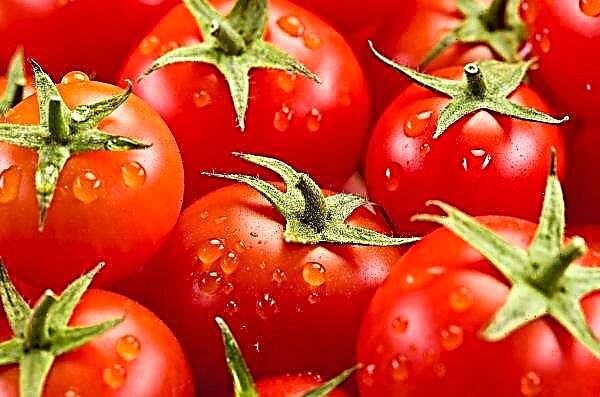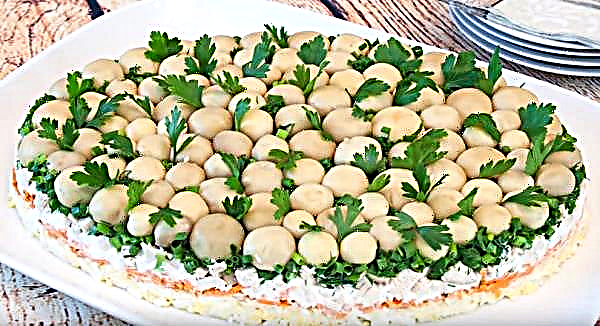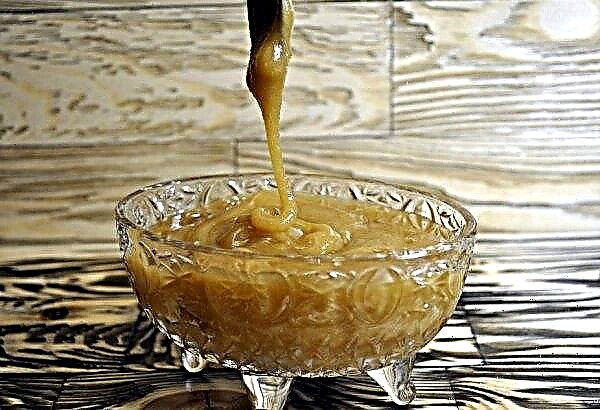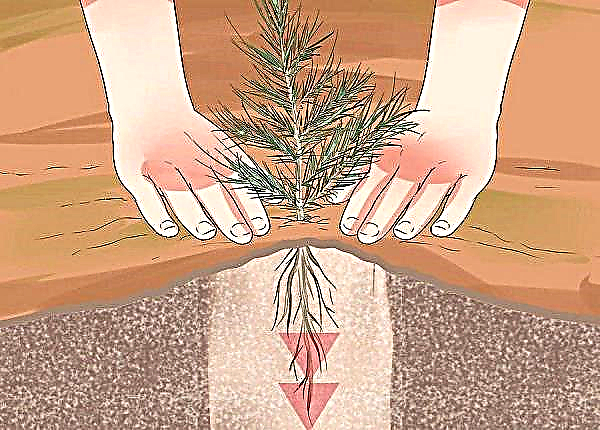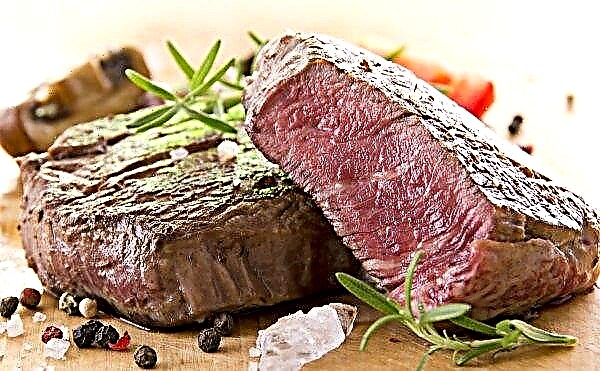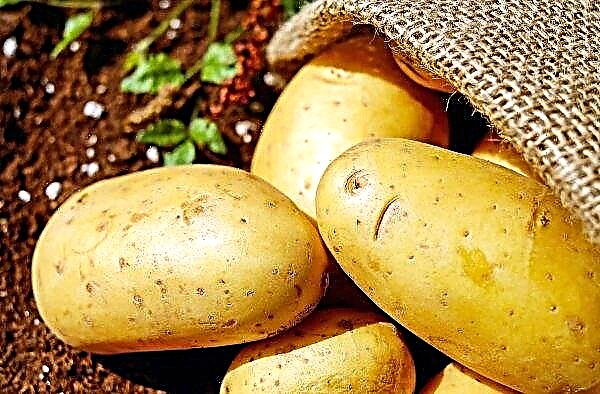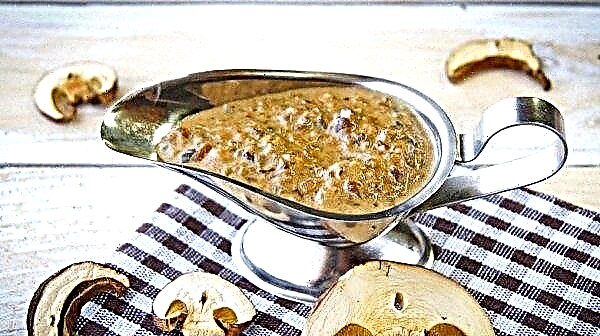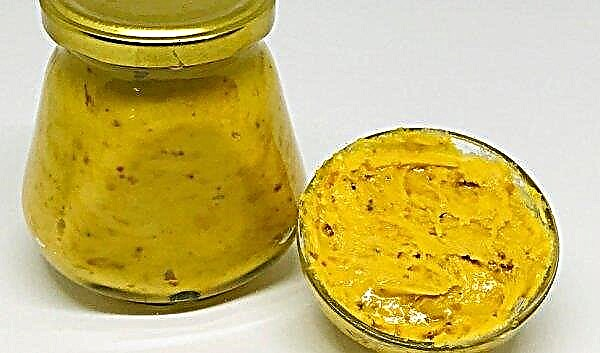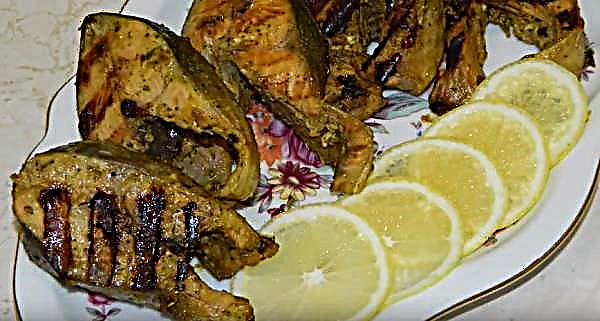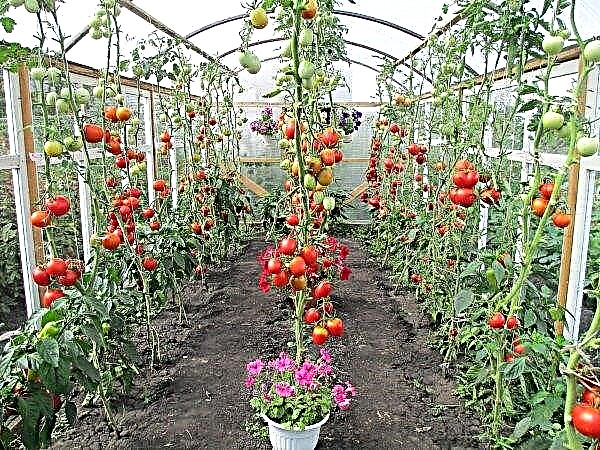Pickled garlic - an appetizer is not ordinary, but very tasty, and most importantly, healthy. There are many ways to cook it. Especially for those who want to replenish the book of recipes with a new interesting dish, and the winter diet is an indispensable source of vitamins, in this review the most successful options for pickling garlic are selected.
Which garlic is better to take for harvesting?
Early vegetables are not suitable for preservation, because they have not yet had time to gather nutrients, and too late, harvested with the advent of the first frosts, on the contrary, lose their juiciness, dry out and deteriorate.
Important! Garlic is planted in late autumn or early spring. In the first case, the crop is harvested in July, in the second - in early September. It was at this time that the procurement should be carried out.
The heads of the vegetable should be firm and the flesh juicy. Since the teeth in most recipes are marinated in their entirety, they should not have defects or damage, traces of rot, mold, dark spots. The less time elapses from the moment of digging out the head to rolling it into cans, the tastier the billet will be. In some recipes, garlic is pickled without separation into the teeth, with a whole head. In these cases, you can use a young vegetable, for all other methods of canning, only matured is used.
In some recipes, garlic is pickled without separation into the teeth, with a whole head. In these cases, you can use a young vegetable, for all other methods of canning, only matured is used.
How to pickle garlic with teeth?
Below are the four best ways to harvest garlic in marinade. Any glass containers are suitable for canning, but it is better to use cans of 0.5 liters with screw caps. In the absence of such, you can use cans with tin lids, then for work you will need a seaming machine.
Did you know? Many housewives were faced with the fact that garlic suddenly turns blue during cooking. It turns out that in case of a violation of the integrity of the clove in garlic, an amino acid is formed - alliin, and from it, in turn, the natural antibiotic allicin. It is in the process of this chemical reaction that the vegetable “repaints”.
Before starting work, the container must be well washed under hot running water using a detergent, and then sterilized in one of the ways:
- stand on steam (using various kinds of coasters) 2-3 minutes;
- boil in a pan with water (put fabric or gauze folded in two or three layers at the bottom of the pan so that the glass does not crack);
- pour cool boiling water and leave for 4–5 minutes (in this case, water is first poured into a clean container, heated to no more than +60 ° C, then it is drained and only after that boiling water is poured).
In all recipes, the number of products is designed for three half-liter jars.
Recipe 1
The highlight of this recipe is two flavoring additives - tarragon, it is tarragon, and dried dill. These herbs give the finished dish a unique touch.

Essential Ingredients:
- garlic - 0.5 kg;
- table salt (not iodized) - 2 tbsp. l .;
- sugar - 2 tbsp. l .;
- table vinegar 9% - 3 tbsp. l .;
- black pepper - 30–35 peas;
- tarragon - 0.1 g (about two pinches);
- dried branches of dill - 1 g (a pinch on a half-liter jar);
- purified water - 0.5 l.
Step-by-step instruction:Did you know? It is impossible to get rid of the characteristic smell of garlic with toothpaste, mouthwash or chewing gum. Sulfurous substances that cause a similar aroma quickly enter the blood, lungs and other internal organs, so that their concentration is far beyond the mouth.
- Dismantle the bulb into the teeth, but leave a layer of the skin on each of them.
- Fill sterilized containers with teeth.
- Place dried dill on top.
- Prepare a solution of water and spices, put peas of pepper and tarragon in it.
- As soon as the brine begins to boil, fill them with cans to half, put the remaining liquid again to warm up.
- Pour vinegar in a container of 1 tablespoon each.
- Top up the cans with brine.
- Screw the caps on the container.
- Turn containers with preservation upside down and place on a horizontal surface covered with a dry, clean cloth. Carefully inspect the lid from below, making sure that no brine flows out from under it.
- You can wrap the preservation with a thick cloth (for example, a blanket) or leave it to cool at room temperature in a place protected from draft.
Video: Pickled garlic with tarragon
Recipe 2
In this recipe, instead of dried herbs, fresh ones are used.
Essential Ingredients:
- garlic - 0.5 kg;
- table salt - 2 tbsp. l .;
- hot cayenne pepper - 3 pods;
- horseradish root - one large or several small;
- fresh sprigs of parsley - 20-30 pieces;
- Dijon mustard (in grains) - 3 tsp;
- bay leaf - 6 pcs.;
- black pepper - 30–35 peas;
- allspice - 10 peas;
- dried cloves - 3 pcs.;
- purified water - 0.5 l.
Important! The presence of horseradish in preservation gives vegetables an additional crunch. By the way, tarragon, which was used in the first recipe, has the same property.
Step-by-step instruction:
- Dismantle the bulb into the teeth and completely free from the skin.
- Cut the peeled horseradish root into small pieces.
- Wash parsley with warm water.
- Place the teeth in the prepared container, alternating with parsley and pieces of horseradish.
- Put in each jar on top a pod of hot pepper.
- Add Dijon mustard to each container for 1 tsp.
- Prepare a solution of water, salt and sugar, add spices to it, put the future marinade on a fire and cook for several minutes from the moment of boiling.
- Pour marinade over teeth and leave for 5 minutes.
- Drain the brine into the pan, boil and pour vinegar.
- Fill the containers with the teeth with the ready-made boiling marinade again, close the lids tightly.
- Place the cans upside down on a clean cloth, making sure that they are tight, leave to cool.
Video: Pickled garlic with horseradish
Recipe 3
The advantage of the recipe is its simplicity, the absence of additional ingredients, and the fact that a vegetable prepared in this way can be consumed in two to three days. The workpiece does not roll up, but it must be stored in the refrigerator.
Did you know? The ancient Egyptians had certain skills in preserving food. At the opening of the tomb of Tutankhamun, an earthenware container with duck meat covered in olive oil was discovered in it. The vessel was so well corked with a special resin that its contents after three millennia remained fragrant and had no visible signs of spoilage!
Essential Ingredients:
- garlic (preferably small) - 250 g;
- table salt - 3 tsp. with a slide;
- sugar - 4 hours with a slide;
- table vinegar 9% - 120 ml;
- bay leaf - 3 pcs.;
- black pepper - 30–35 peas;
- allspice - 15 peas;
- purified water - 1.2 l.
Video: Pickled Garlic Recipe
Step-by-step instruction:
- Disassemble the head into teeth, completely free from the skin, remove the remaining roots. Cut large teeth in half, leave small ones intact.
- Rinse teeth with warm water.
- Place the teeth in clean jars so that half the capacity is full.
- Fill the jars with boiling water and leave for 10 minutes, then drain the water.
- To make a marinade in boiling water, combine salt, sugar, bay leaf, allspice and bitter pepper, boil, and then cook for another two minutes.
- Pour jars to the top with a hot marinade, cover with a nylon cover.
- When the containers have cooled down, put them in the refrigerator and try two days later for readiness.
Important! In the recipe above, it is important to maintain the condition under which the container is filled with garlic no more than half. It is a large, compared to the main raw material, amount of hot marinade that provides small cloves with quick cooking.
Recipe 4
Harvesting looks impressive thanks to the addition of beetroot juice.
Find out also

Essential Ingredients:
- garlic - 0.5 kg;
- table salt - 1 tbsp. without a hill;
- granulated sugar - 50 g (about 1/3 cup);
- table vinegar 9% - 1.5 tbsp. l .;
- black pepper - 10 peas;
- bay leaf - 3 pcs.;
- fresh beets - 1 medium-sized root crop;
- purified water - 0.5 l.
Step-by-step instruction:
- Dismantle the bulb into the teeth and free from the husks and roots of roots, remove damage.
- Place the teeth in a clean bowl, pour cool boiling water and blanch for 3-4 minutes.
- Drain the water and immediately fill the teeth with cold water, which after a couple of minutes drain.
- Arrange the “hardened” teeth into prepared jars so that 2-3 cm remain to the neck. The garlic should be placed in a bowl freely, this will ensure uniform pickling.
- Using a juicer, get juice from beets.
- Dissolve all the spices in the right amount of water, then bring the mixture to a boil. Pour vinegar, boil again and remove from heat.
- Pour freshly squeezed beet juice into the solution and let stand for 1-2 minutes.
- Fill the marinade jars with garlic to the brim, tighten the lids tightly.
- Put the cans upside down on a dry, clean cloth, make sure that they are tight, wrap them with a towel or blanket and leave to cool at normal temperature away from bright light.
Did you know? Hutsul women have long believed that a necklace of fragrant heads will protect them from ... an unplanned pregnancy. This method of contraception, used by the indigenous peoples of Transcarpathia, is described in the short story by M. Kotsyubinsky “Shadows of Forgotten Ancestors”.
Video: Pickled garlic with beets
Storage rules
It is better to store home-made preparations in the cellar, but since not everyone has such an opportunity, you can allocate a place in the pantry or closet.
It is important to ensure the following conditions for preservation storage:
- protection from light (any pickles like the dark, however, pickled garlic needs it especially, since the teeth begin to darken in the light, for this reason many housewives even wrap each jar in dark paper or a dense garbage bag);
- the absence of temperature differences (preservation can be maintained at a plus temperature of no higher than 25 ° C, in the cold, the marinade begins to freeze, and the banks crack, and in extreme heat, the shelf life of pickles decreases sharply);
- lack of drafts;
- maximum immobility (shake containers with pickles should not be).
If the technology and sterility were maintained during preparation of the preform, such preservation can be stored for six months in tin-lined jars and for up to a year in cans with threaded lids.Important! For a tightly closed can, the lid is always slightly retracted inward. If the slightest signs of lid swelling, leaking marinade from a jar or clouding of its contents are detected, the workpiece should be discarded.
Useful Tips
To make the pickling process easier, and make the dish tastier, the housewives should know some tricks:
- There are several ways to free garlic from its husk. For example, soak the heads for several hours in warm water. The skin will become soft and peel off easily. Another option: put the teeth on a cutting board and crush them with a knife with a wide blade. Another way: pour unpeeled teeth into a metal container with a narrow neck, cover it with a lid or palm and shake vigorously for several minutes, as if preparing a shake. In this way, at least half of the teeth are cleaned.
Video: How to Peel Garlic Quickly
- Whatever pickling method is chosen, the top layer of the skin from the head should always be removed.
- To preserve color, the prepared teeth are soaked in cold water for about two hours before laying in containers.
- Pickled garlic is a spicy dish; nobody will consume it in large quantities. Therefore, it is better to take containers of the minimum volume for the workpiece.
- Many home prescription recipes involve sterilization. Garlic contains so many bactericidal substances that such a procedure is unnecessary when marinating it.
- Never pour glass containers immediately with boiling water, first use hot water for preheating.
- Salt for home preservation is better to use large, small “Extra” is worse.
- Fresh greens increase the risk of bacteria multiplying in home preservation, therefore it is recommended to first pour over it with boiling water and only then put it in a container.
- It is better not to boil the vinegar solution present in the marinade, but to add it directly to the cans immediately before rolling.
- The water used for preservation must be soft, otherwise the finished dish will have a metallic aftertaste.
Did you know? This is impossible to believe, but garlic contains about twenty-seven percent polysaccharides and is considered one of the sweetest plant foods. For comparison: the sugar content in wine grape varieties does not exceed sixteen percent!
Cooking pickled garlic is easy. All of these recipes can be improved to your taste, changing and complementing the components included in them: you can add lemon, honey, celery, cherry or currant leaves. Thus prepared product can be used in cooking instead of fresh or used as an independent dish, so it’s definitely worth trying to make such a preparation for the winter.

